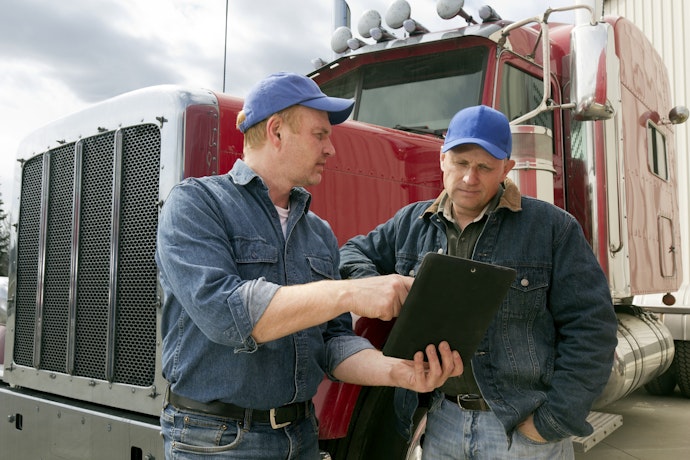Why Roadside Assistance is Not a Luxury Anymore, it’s a Necessity
Roadside assistance gives your drivers and managers quick access to help that gets your drivers back on the road as quickly...
Read more
The answer is an emphatic yes. Every time a truck driver gets behind the wheel, he or she is at risk. In fact, of the top 25 deadliest occupations in America, truck driving ranks seventh on the list. Truck drivers also face the highest number of fatalities of any job, at a rate of 918 fatalities each year.1
According to the U.S. Bureau of Labor, the most common cause of workplace death is transportation accidents, which account for 40% of all on-the-job deaths; and delivery truck drivers experience nearly three times more injuries and deaths than any other occupation.2 And this number is only going up each passing year. The U.S. Department of Labor points out that the number of truck drivers who were killed on the job rose 6.6% from 2016 to 2018.3
The growing competition in the online retail industry, has also made a big impact on the day-to-day lives of truck drivers. With the “Amazon effect”, consumers are led to believe that one-day turnaround for their online deliveries is a norm. With increasing number of packages flooding the supply chain and the frequency of deliveries being made, truckers are performing under pressure.
While fleet managers and truckers work hard to create a culture of safety, it’s important to make timely investment in telematics technology to combat the ever-increasing demands on truck drivers.
Modern telematics technology provides features and capabilities that streamline fleet operations and can help make a dangerous job safer while underscoring a safety-first approach for your fleet. According to the U.S. Department of Transportation (DOT), companies that actively develop and promote a strong safety culture have fewer and less severe accidents. By setting and enforcing high expectations for safety behaviors from the top down, a culture of accountability is established. And, when combined with a telematics system to track and measure safety metrics, fleet managers can experience the power of a cost-effective and proven solution that helps:
Link driving behavior to driver safety. Telematics helps improve driver safety by monitoring the location and speed of every vehicle. It provides near real-time alerts when speeding incidents occur, and automated speeding reports on a daily, weekly, or monthly basis. It also highlights other risky driving behaviors such as hard braking and fast acceleration. By creating awareness of these behaviors, fleet drivers can be more aware when they get behind the wheel, and you can support a greater return on investment.
Increase vehicle safety. Improved maintenance leads to healthier, more efficient vehicles and decreases the risk of breakdowns or unexpected problems. Telematics can provide up-to-the-minute data on vehicle condition to help streamline fleet upkeep and control repair costs to extend the service life of vehicles. This is done via automatic mileage calculations, daily odometer updates, and notifications when preset maintenance intervals are reached. Using this continuous monitoring, engine issues can be identified early, making vehicles safer to drive and making it easier to stay in compliance with governmental emission requirements.
Elevate route safety. Unknown terrain and unsafe roads pose a constant driver hazard. Telematics technology helps mitigate the dangers associated with getting lost or taking the wrong route by providing navigation that calculates truck-legal routes, reduces left turns and gives detailed “last-mile” directions. It also allows managers to set up geofence alerts and use GPS tracking data to steer workers through, or around, dangerous areas like construction sites or pockets of extreme temperature zones, and receive notifications when workers enter and exit hazardous places.
Improve crisis and weather response. Weather emergencies and other disasters can strike without warning. Smart telematics solutions can alert the office to a driver in trouble via automated notifications and can leverage GPS to provide first responders with critical information about driver location in real time. In addition, the technology affords maps with satellite weather overlays to track developing systems and dangerous storms, providing drivers with advanced notice to allow time to prepare for impending conditions.
Have a turn-by-turn visual driving account. It’s difficult to know exactly what happens pre-crash. Was the driver distracted? Did another vehicle slam on the brakes? Now, thanks to dashcams, it’s easier to understand the context of an incident involving a truck. Integrated fleet dashcams capture the moments before a crash occurs, and the visual data often demonstrates who was responsible in the case of a collision. Integration with telematics software data can also help provide extra insight into driver behavior. Contextual evidence of incidents surrounding an accident can help fleet managers and drivers reduce crashes and fatalities by creating accountability and establishing driver safety as a top priority.
Achieving safety is a process. Here’s a quick guide to building a fleet business that is safe for the truck drivers, stress-free for the fleet managers and efficient for the customers.
Sources:
1, 2 - The 25 most dangerous jobs in America
3 - Credit - national Census of Fatal Occupational injuries 2017



Find out how our platform gives you the visibility you need to get more done.
Roadside assistance gives your drivers and managers quick access to help that gets your drivers back on the road as quickly...
Read moreLearn more about modern integrated video solutions like fleet dashcams and how they help fleet managers enhance vehicle...
Read moreIn-vehicle automation technology can help reduce a number of negative driver behaviors and potential errors, contributing...
Read moreWith the consistent increase in stops and idle time, the regular issues of fuel wastage, wear and tear, and dangerous...
Read more
Get your free 2024 Fleet Technology Trends Report and see how organizations are: